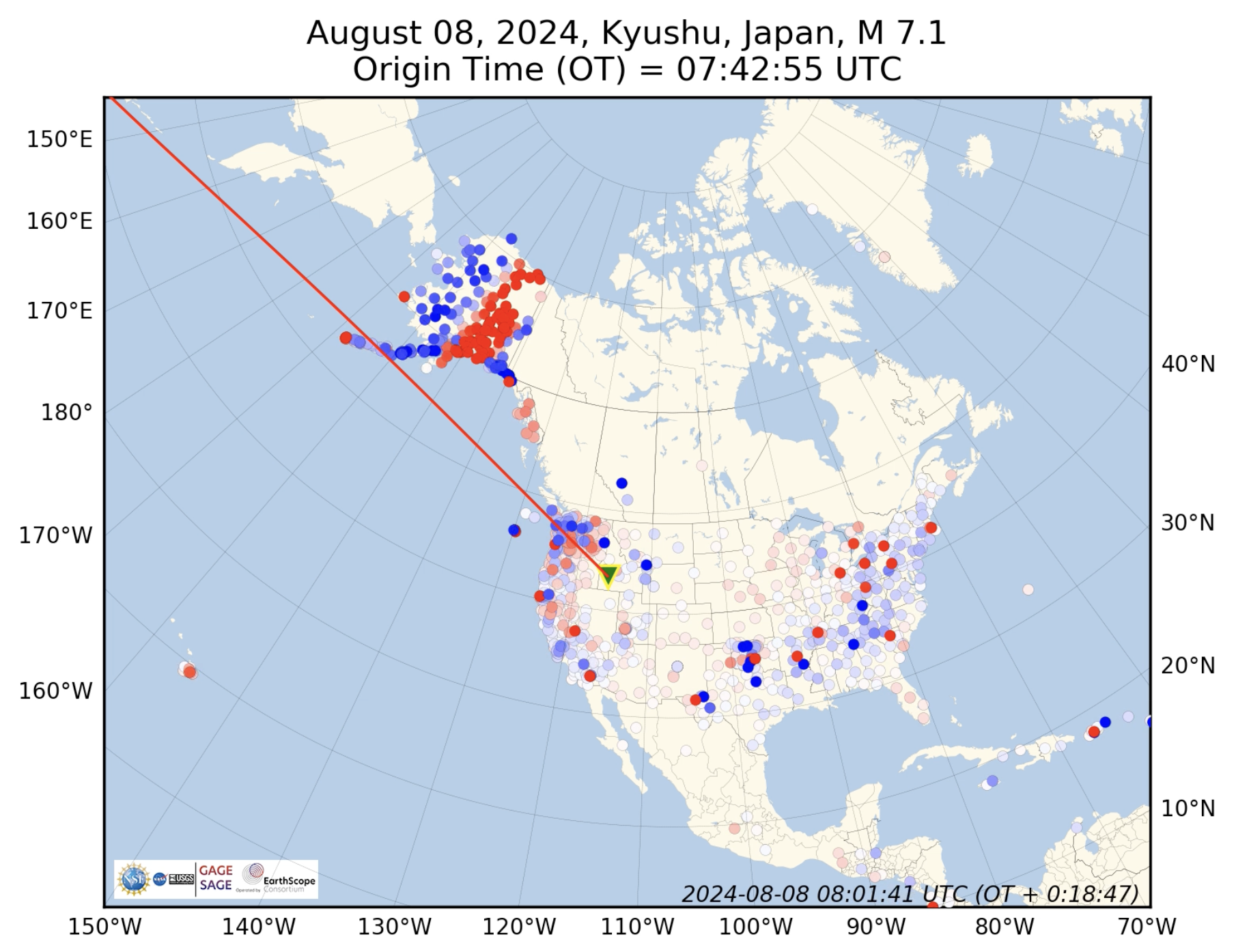
We’ve had a surge in inquiries in the past several days, related to Japan’s magnitude 7.1 earthquake on August 8, 2024. The two main concerns that Alaskans are raising are, firstly, whether a big earthquake across the ocean from us could raise the stress level along the Alaska section of the Pacific plate boundary. The second is related to earthquake predictions, especially in light of Japan issuing a “megaquake advisory.”
Let’s address the second query first. There is currently no way to predict an earthquake, and scientists consider it fundamentally irresponsible to offer such a promise. While currently no one has the ability to predict the size, location, magnitude, and time of an earthquake, we can guarantee that Alaska will continue to have earthquakes—the Alaska Earthquake Center reports one earthquake on average every 10 minutes in the state.
Similarly, Japan can guarantee that they will continue to have earthquakes. On August 8, the Nankai subduction zone ruptured in a M7.1 quake. This subduction zone has a history of very large earthquakes. A M8+ occurs there every 100 years or so, and the last one was in 1946. Additionally, the magnitude 9.1 Tohoku earthquake in 2011 was preceded by just a few days by a magnitude 7.2 earthquake. Thus, Japan took the unprecedented step of issuing an advisory—NOT a prediction!—to remind people that the area is capable of very devastating earthquakes and everyone should be prepared for the eventuality of the next one. Generally, there is a 5–10 percent chance that a moderately sized earthquake can be followed by a larger earthquake in the same area within a few days.
The first question, of one big quake triggering another, is a touch more complicated to address. There is indeed a phenomenon called “triggered events,” and such a thing has even been documented in Alaska. IF a fault is oriented just the right way, and IF its stress state is near a critical failure point, then a seismic wave crossing the globe could indeed tip that fault into just the right stress state to slip. Seismic waves from every earthquake penetrate and traverse the globe, which effectively rings like a struck bell. (See the figure in this story for a snapshot of an animation of Japan’s August 8th seismic waves crossing our network, created by EarthScope Consortium.) The chances of a scientist being able to determine how any of Alaska’s hundreds of faults may respond to any given seismic wave is basically zero.
There is one other piece to the long-distance influence of a large earthquake, which is the concept that a single earthquake can shift stresses in the surrounding region enough to trigger another earthquake. This is known as Coulomb stress transfer, and it’s limited to a region immediately adjacent to the ruptured fault. A neighboring fault in the same region, or adjacent part of the same fault, could be triggered to slip by a large quake. This is what happened in the case of the October 2020 magnitude 7.6 Sand Point aftershock of the July 2020 magnitude 7.8 Simeonof earthquake. Coulomb stress transfer within Japan’s fault networks is one of the possibilities that Japan is worried about following their M7.1 quake, and part of why they issued the advisory, but it’s not the kind of effect that could reach Alaska.
